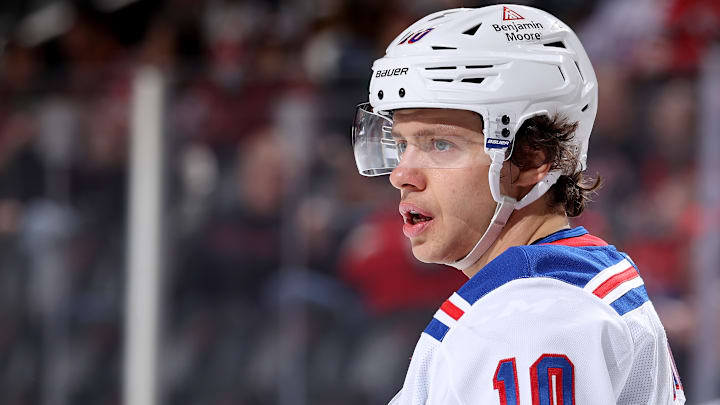The New York Rangers find themselves in a very unique situation entering the 2026–2027 season. The league announced at the tail end of this past season that the cap will rise significantly over the next few years—by as much as $10 million after the upcoming campaign. With fans clamoring for a change of pace to the current shape of the team, this presents massive upside to score big in either a trade or free agency. Yesterday Blue Line Station's own Justin Bonhard considered both sides of the coin associated with Panarin's future, and today I have my own thoughts on the matter.
The 2026-2027 unrestricted free agency class
It's not every day that names like Connor McDavid and Jack Eichel are up for grabs, regardless of how it happens. While it may be unlikely for the Rangers to acquire those particular names, the list for 2026 runs much deeper. Guys like Kirill Kaprizov, Cale Makar, Jason Robertson, and Kyle Connor round out an unprecedented crop of players that any team in the NHL would love to add to their squad—all without having to ship off major assets to make it happen.
I'm all for hedging your bets and assuming that some of the top players I just mentioned will re-sign before then and become unavailable, but if you're Chris Drury, it's certainly something you have to be thinking about. The addition of any one of these names would be a gigantic win for a team that, just a season ago, held a lead in the series over the eventual Stanley Cup–winning Florida Panthers.
The cap crunch
While Artemi could still theoretically be extended to something team-friendly, the players themselves are also aware of the cap increase. Looking around the league at some of the contracts being handed out, it seems like the going rate for a star-caliber player is climbing rapidly.
Let’s say Panarin re-upped for $10 million AAV with the Rangers—that would only be a discount of $1.6 million from the contract he's already on. Combined with the rising cap, the Rangers could inherit nearly $22 million in cap “relief” simply by allowing the contract to expire—without even factoring in any additional flexibility. I would argue it's a once-in-a-lifetime opportunity falling into your lap, one that would allow the team to pursue one or several of the hottest players available come next offseason.
What is the Breadman's future?

I, for one, would not be upset if the team did decide to extend him. When Panarin is on, he is one of the most dynamic players in the NHL. Over the last six years, he ranks fourth in NHL scoring behind only Nathan MacKinnon, Leon Draisaitl, and of course, Connor McDavid. While there has always been a crowd of naysayers regarding his cap hit, playoff production, and willingness to shoot the puck, he is undoubtedly one of the best Rangers to ever lace them up.
Regarding his mileage, Artemi only cracked the NHL at 24 years old when he signed with the Chicago Blackhawks in 2015. There's an argument to be made that he hasn't had quite the wear and tear one might typically expect with an additional six seasons in the big leagues. The question is: will he still be the same player we’ve seen before as he enters the season after this one at the age of 35?
Ultimately, the Rangers face a pivotal crossroads. Do they double down on a franchise icon whose production has remained elite but whose age raises valid long-term concerns? Or do they take advantage of a rare financial window that could reshape the roster for years to come? The answer won’t be easy—but how Chris Drury navigates this decision may define the next era of New York Rangers hockey.
